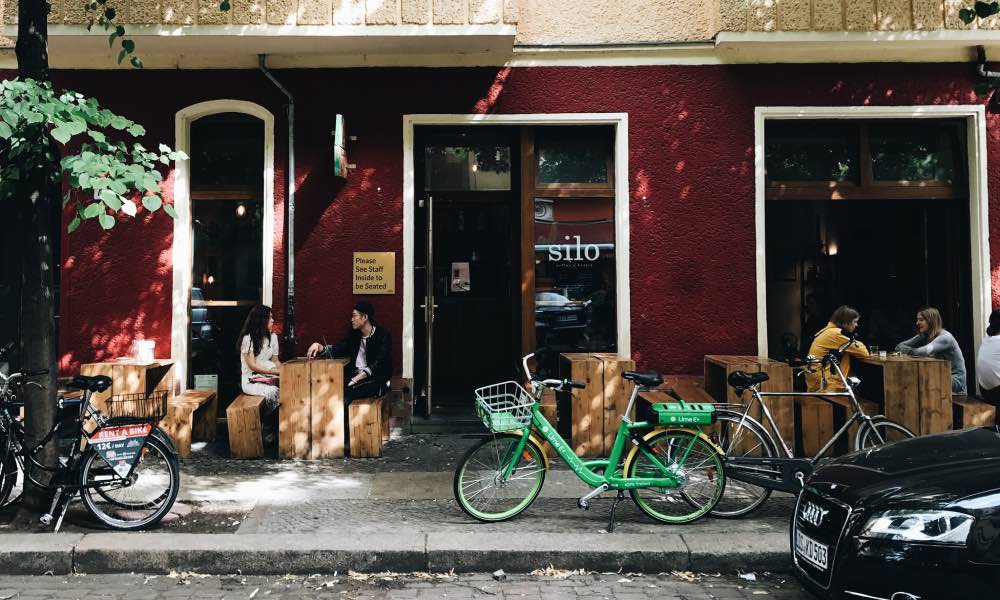Do coffee shop loyalty schemes actually work?
Jordan Montgomery speaks with Morgan Love to find out if loyalty schemes actually work, and what value they can bring to coffee shops beyond the bottom line.
Loyal customers are the backbone of coffee shops around the world. Just a 5% increase in customer retention has been found to raise profits by 25-95%. It is no wonder that businesses work hard to ensure customers are made to feel valued.
Regular customers provide coffee shops with consistent and more reliable cash flow – spending up to 67% more than a new customer, studies find – as well as an opportunity to engage with the community.
In an increasingly competitive market, however, coffee shops are struggling to grow their community of loyal patrons. A recent study showed only 56% of surveyed consumers visited cafes on a weekly basis during the Covid-19 pandemic, compared with 85% before the pandemic.
With a larger number of consumers working from home and the at-home market booming, coffee shops are looking for ways to encourage old customers to return and for new customers to become loyal regulars.
Physical “loyalty cards” have been a coffee shop staple for many years, allowing customers to accumulate stamps for each drink bought until reaching the required number of purchases in order to qualify for a free or discounted drink.
Silo Coffee has used a loyalty scheme in some form since opening in 2014. Founder Morgan Love explains that these schemes are beneficial not only when trying to attract new business but to increase the likelihood of repeat customers.
“I like the idea that we are able to reward our most loyal customers,” he says. “These customers keep coming back and are part of the foundation of the business and it’s great to be able to give them a little extra something.
“Of course, it is an incentive for people to come back, and that can work really well.”
Incentivising a loyal community of regular customers appears to be a good approach to a highly competitive market, yet loyalty schemes come with their costs.

Can digital solutions revive loyalty schemes?
Recent studies indicate that millennials are the most likely demographic to visit coffee shops on a regular basis, with close to 16% choosing to visit almost every day.
Appealing to younger millennials, as well as enticing Gen Z, has motivated many businesses to adopt digital loyalty schemes – this is in line with the contactless user experience that many customers are coming to expect.
“We used to use the traditional and low-tech version, where someone gets a stamp when they buy a coffee – after they get enough stamps they receive a free coffee,” Morgan explains. “We switched to a digital points-based system and now we give back 5% of the money spent in points, which can then be used as “Silo Cash” when they’re ready to use it.”
It’s not just local coffee shops that use such schemes to encourage repeat business – companies such as Starbucks, Costa and Pret A Manger have developed programmes in which customers accumulate points through regular purchasing.
Since the relaunch of Costa’s loyalty programme with a “frictionless” digital scheme, the company has seen total transactions increase by 16%, generating an extra £1.2 million in profit each month.
Morgan explains that for coffee shops, the use of digital loyalty schemes has benefits for both businesses and consumers.
“This works really well for us, as we’re no longer fumbling around looking for the stamp, and the guests get the rewards they want,” he says. “If someone comes in for breakfast every day and doesn’t drink coffee, for example, they should eventually earn a free breakfast rather than a free coffee.”
However, not all agree that loyalty schemes are beneficial for businesses – at least, not directly.
Risk versus reward
Research from the University of Pennsylvania indicates that, although they may improve the likelihood of repeat customers, loyalty schemes and subscriptions often don’t lead to financial rewards for businesses. Instead, they rely on customers purchasing additional or more expensive items during their visits.
“What they’re trying to do is generate a habit for people,” says Wharton marketing professor, Raghuram Iyengar. “Once people have that habit when they’re coming in for coffee, they may get something to eat. It’s this cross-transfer that businesses are hoping for that’s probably what will make it profitable.”
However, margins for coffee shops are becoming smaller as rising energy costs and inflationary pressure continues to strain finances. Many businesses are taking a closer look at where money can be saved.
As a result, many have had to alter their loyalty schemes in order to remain profitable. Starbucks announced in early 2023 that customers would have to accumulate double the amount of “Starbucks Stars” to redeem certain rewards.
This is evidence that, while great for attracting new and regular customers, there may not be enough of a financial reward for coffee shops to use loyalty schemes.
“With our objective for our loyalty scheme – that is, to reward our local and regular customers – it works,” says Morgan. “Do I think it has an impact on the bottom line of the business? Probably not a massive one. The cons are the cost — we pay roughly €100 per month for our digital loyalty suite.”
But there is an effect on the bottom line. For many businesses, their prices are carefully considered – giving the best value possible while retaining a profit in a sector with relatively slim margins.
A coffee shop charging £3 for a coffee will make £24 by selling eight coffees. With a loyalty scheme that gives the 8th coffee for free, they would make £21 for the same number of coffees sold — amounting to £2.62 per coffee.
When calculating the benefits of loyalty schemes, coffee shops must not only account for the cost of implementing the scheme, but they must also accept charging lower prices per cup.

Will loyalty schemes survive?
Despite the costs, coffee shops may choose to implement loyalty schemes because, through them, valuable sales data can be obtained which can inform business decisions.
“Another benefit of the digital system is it is fully trackable, we know how many points we give out, and how many are used,” Morgan says.
“Our loyalty system also ties into our gift cards and order ahead programme, so these apps are getting more sophisticated and more complete. This gives business owners more information to make better decisions and more revenue stream possibilities.”
However, most point-of-sale (POS) systems come with back-end sales analytics that can help inform business decisions, and there are many other ways in which coffee shops can improve customer retention while not sacrificing on average spend.
For example, improving workflow and shortening wait times with automation has been proven to increase the number of repeat customers in coffee shops. This allows baristas the time to engage more directly with people, improving overall satisfaction and the chance of obtaining a loyal customer base.
As businesses adapt to an industry constantly innovating to meet a dynamic consumer base and stand out in a highly competitive market, it is hard to predict what kind of role loyalty schemes will play in the future of coffee shops.
Ultimately, by understanding the role they play, coffee shops can help supplement the customer experience and generate a resilient, loyal customer base. As Morgan concludes: “The key is to have a great product, whether that is the consumed good itself, the vibe, or the service – of course, best yet, all three.”








